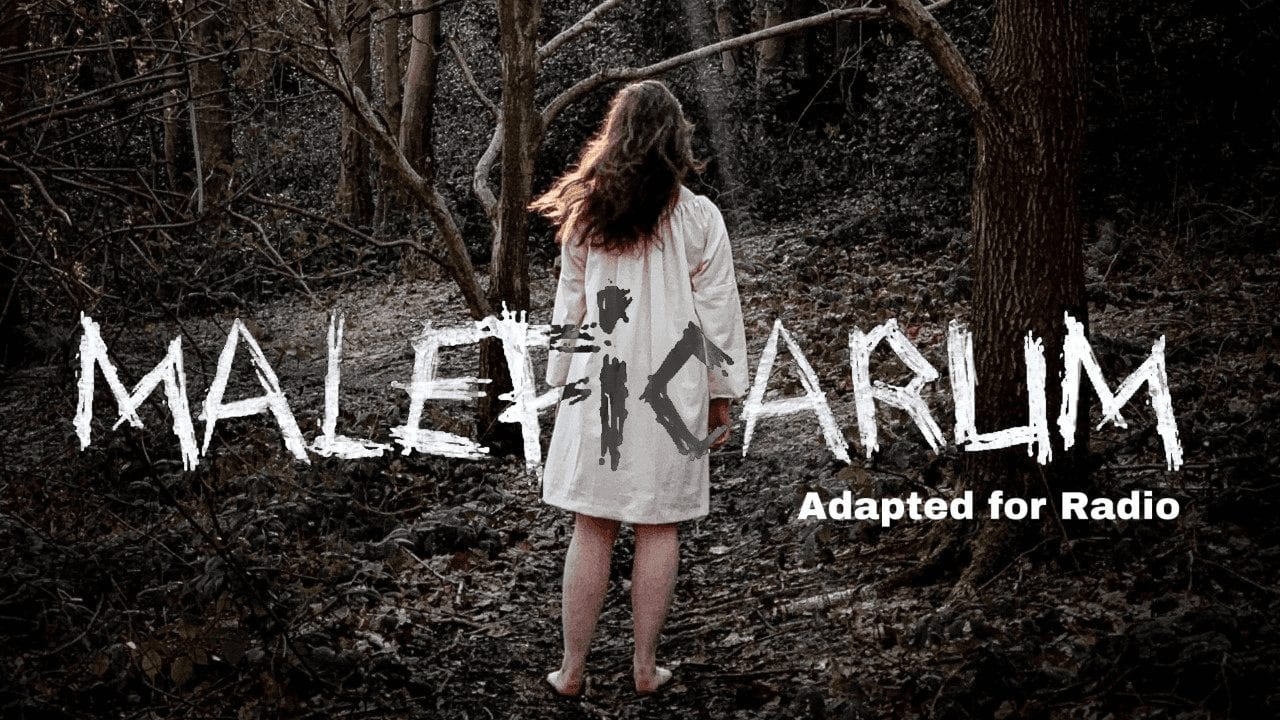Adapted for radio in light of the COVID-19 pandemic, Maleficarum is an hour-long play devised by final-year Theatre & Performance undergraduates at the University of Leeds. The production takes full advantage of its new medium, boldly conveying a unique, yet timeless, message through a deft knitting together of historical evidence and creative storytelling.
The premise is a re-visiting of the trial of Margaret Goldwell, who was convicted of witchcraft in 1611 Hagerstow. Now, in 2020, her descendants are seeking Margaret’s exhoneration using new evidence. The narration of the story as it happened in the seventeenth century is an effective blend of predominantly female voices- perhaps in defiance of the marginalisation and gender stereotypes of women in this time period. Two young girls, Annie and Grace, as well as the accused herself, are given centre ‘stage’, and even the magistrate has been cast as a woman. Although this is historically unlikely, the casting choice brings the message that women should no longer be silenced to the fore of Malificarum’s storytelling.

Overall, the attention to detail is impressive; the piece’s title is seemingly a nod to Malleus Maleficarum, one of the central texts on witchcraft. During evidence given in Maragret’s trial, a detailed understanding of the kind of arguments used to accuse witches is demonstrated; Margaret is given a mandrake to help her conceive, and her sister-in-law asserts that that “All witchcraft comes from carnal lust, which- in women- is insatiable”. Clearly, the company have done an immense amount of homework.
The use of music, especially the different ‘themetunes’ used to introduce the different characters, adds variety and a sense of structure for a listening audience, in the absence of visual cues. Similarly, the well-scripted overlaying of voices during the trials and newsreel convey the hysteria and accusatory nature of claims against women to which the play alludes. The smooth transitions between scenes and narrators makes Malificarum engaging, easy to follow and allows the audience to connect with the characters, despite only hearing their voices.
The end of the play is strong, as the historical events about which we have just heard are translated into a request that we “cancel the witch”. Earlier, these kind of messages are more gently implied, such as the notion that both men and women can take part in dangerous vilifications of female figures, inferred from Florence’s damning accusation of Margaret. The explicit mention of female, celebrity figures whose experiences supports this, such as Princess Diana and Caroline Flack, makes for a powerful final scene. But, there is perhaps a lack of subtlety in this messaging, compared to the rest of the play.

After the revelation that the case has been rejected and a backlash has ensued, there is a listing of condemned historical female figures, including Joan of Arc. A further cresendo in tone and intensity, during the closing scene, might have given the audience a little more space to think for themselves and reflect on the issues at hand; I found myself reflecting on the narrative to get to grips with what I had just seen, rather than taking in the contemporary relevance of the play. Despite this, the piece is generally effective in its linking of the phenomenon of witch trials to the ongoing subjugation of women. It draws our attention to the fact that witchcraft trials still occur in various countries, and as such, the message of the final line “#BeKind” does resonate, backed by the memorable and creatively conveyed story we have just heard.
You can listen to Maleficarum now by clicking here.
Words by Lottie Hayton.
